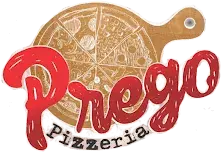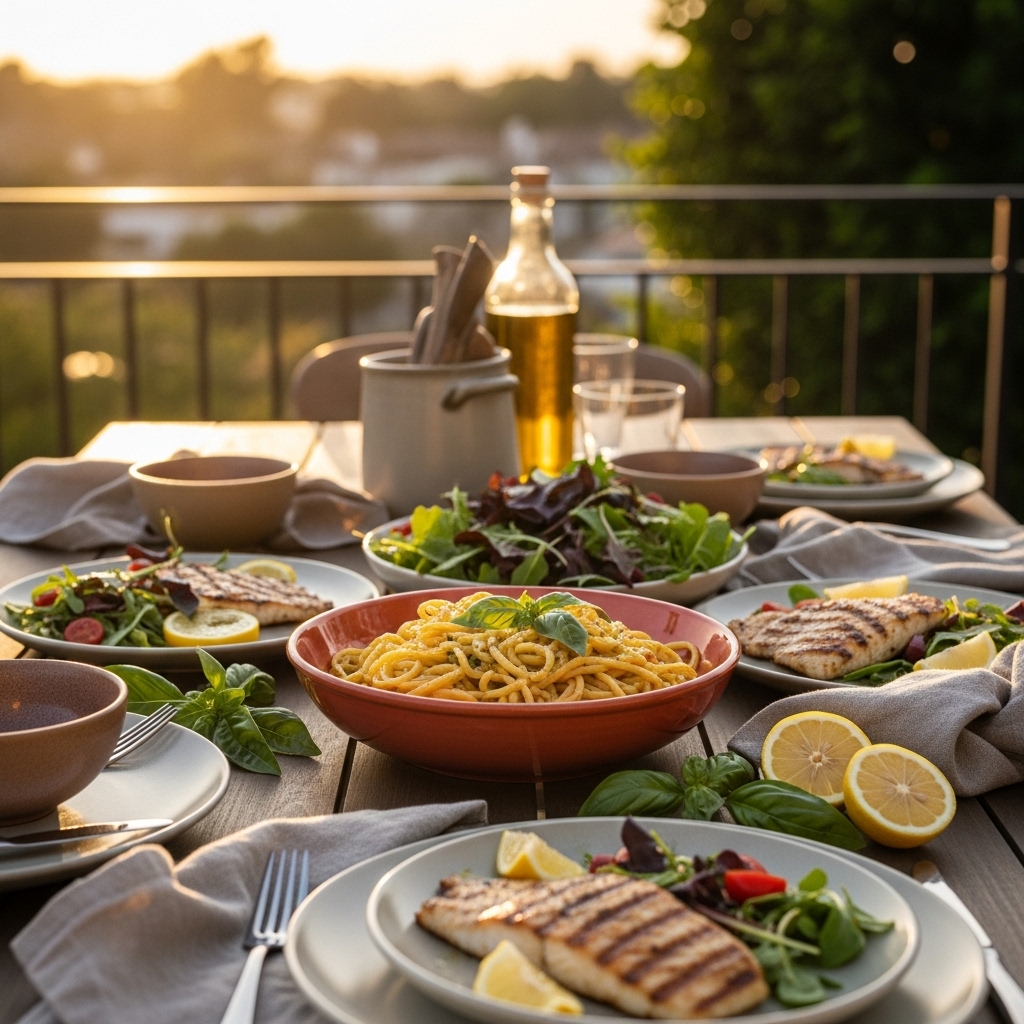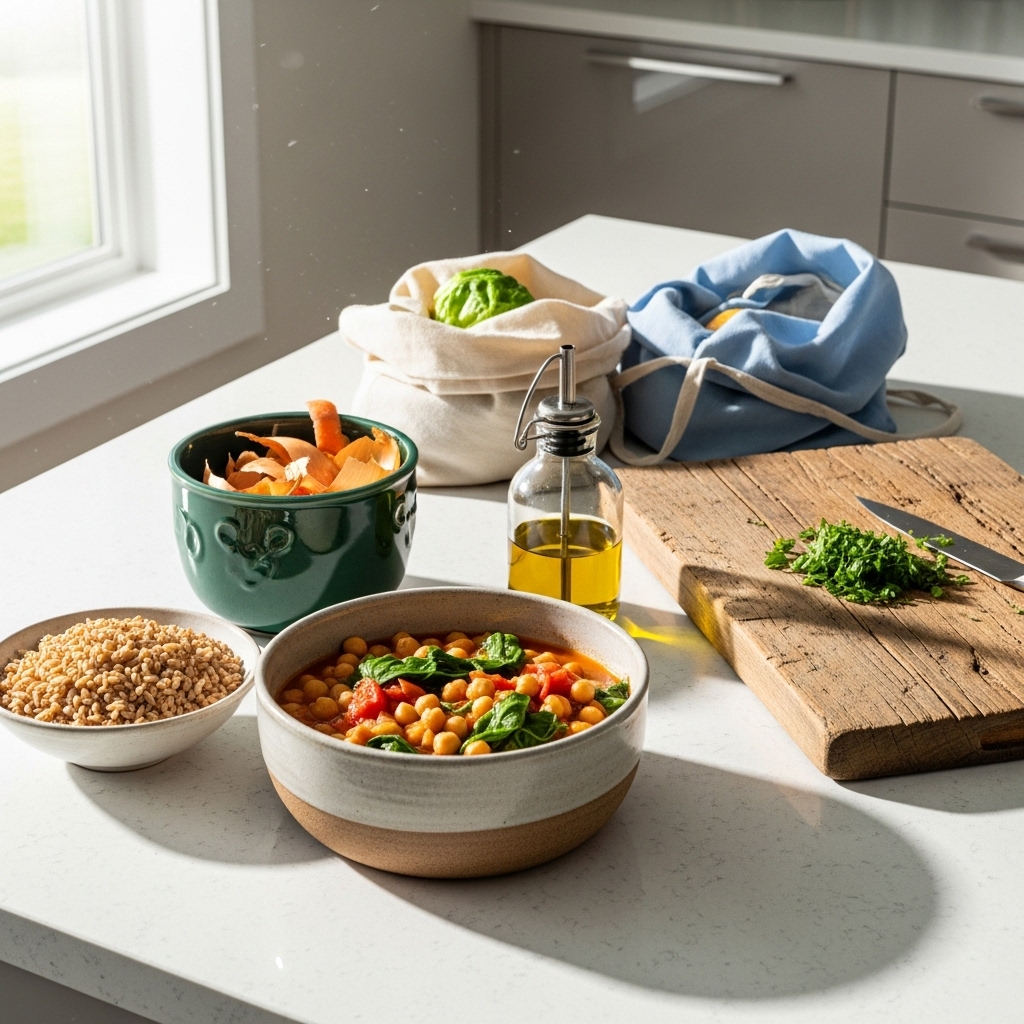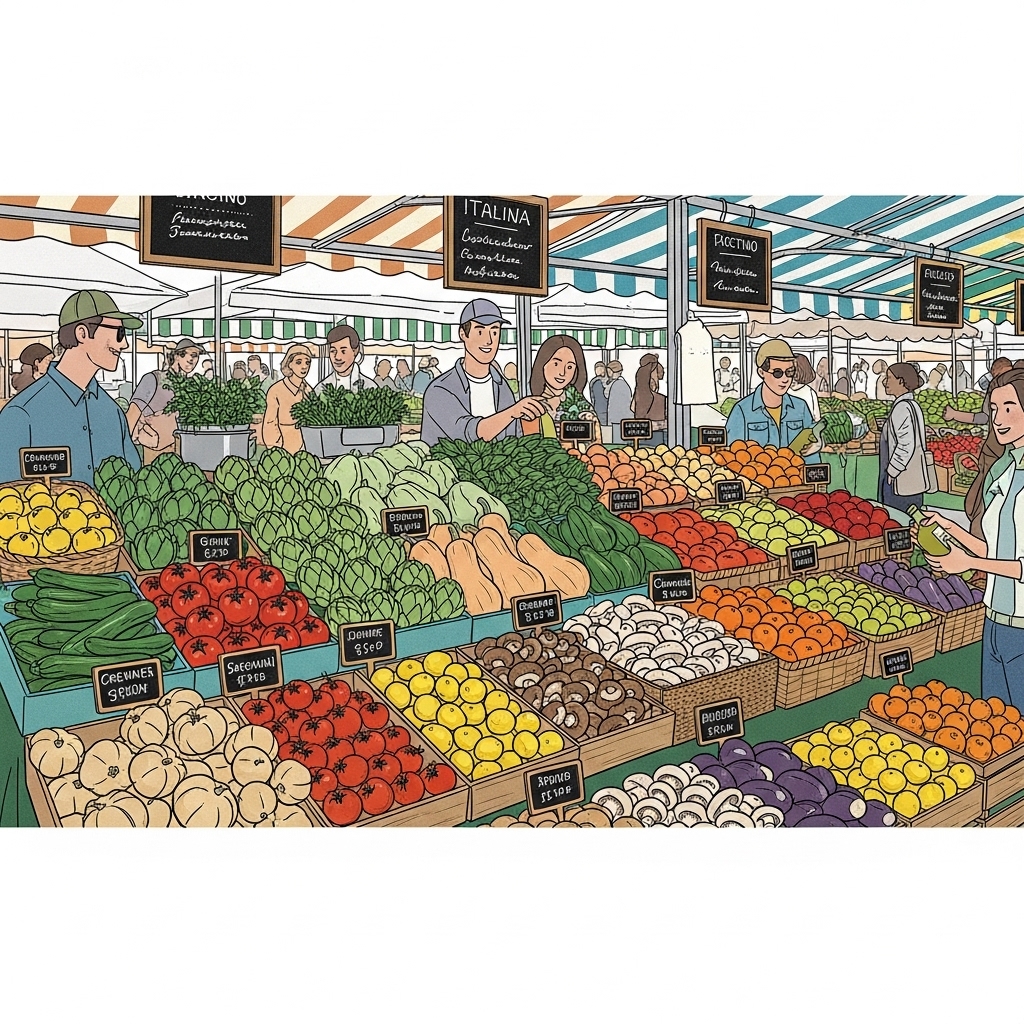On any given afternoon in Encino, the breeze off the hills drifts through the jacaranda trees along Ventura Boulevard, and the neighborhood hums with a pace that balances wellness and indulgence. It’s in this rhythm that the health benefits of thoughtfully prepared Italian cuisine truly shine. As someone who has spent years exploring local kitchens, chatting with market vendors, and sharing tables with families from Oxford Triangle to the quiet streets near the Sepulveda Basin, I’ve seen how a mindful approach to Italian cooking can support daily energy, heart health, and community connection. When we talk about healthy eating here, we don’t mean a rigid plan; we mean real meals, cooked with care, shaped by seasons, and served with conversation. That’s the soul of Encino’s approach to Italian food, and it’s a big reason why so many residents choose pasta bowls, grilled fish, and vibrant salads as fuel for hikes in the Santa Monica Mountains or sunset strolls around Lake Balboa.
Italian food’s reputation for wholesomeness comes from simple ideas that have stood the test of time. The Mediterranean style of eating—rooted in vegetables, fruits, whole grains, legumes, lean proteins, and olive oil—has been linked with longevity and lower risks of chronic disease. But it’s not only about ingredients; it’s the way meals fit into daily life. In Encino, where mornings start early and evenings often stretch into soccer practice, Pilates classes, or neighborhood fundraisers, a balanced Italian dinner becomes a reliable anchor. We gather around the table to slow down, savor, and connect, and that social ritual itself is a pillar of health.
The heart of the Mediterranean pattern in Encino kitchens
Start with olive oil, the cornerstone of Italian cooking. A drizzle of extra-virgin olive oil over tomatoes and basil adds heart-friendly monounsaturated fats and peppery polyphenols that support vascular health. It’s not about drowning a dish in oil; it’s about using just enough to coax out flavors while keeping the profile light. In neighborhood spots along Ventura, you’ll notice how chefs use olive oil to wake up a bowl of cannellini beans or finish a grilled branzino. That finishing touch is more than culinary flourish—it’s a way to deliver nourishment in a form your body can use.
Tomatoes are another quiet hero. Whether tucked into a slow-simmered sugo or quartered into a salad, they bring lycopene, vitamin C, and a burst of acidity that brightens a plate without relying on heavy sauces. Pair tomatoes with garlic and onions, and you’re layering antioxidants that are as good for your immune system as they are for a dish’s complexity. In Encino, our long growing season means local tomatoes can be spectacular from late spring through fall, especially when sourced from nearby farmers markets. When I bite into a summer tomato folded into fresh mozzarella and basil, I taste sunshine—and a spectrum of nutrients that feel tailor-made for active days.
Whole grains deepen the health story. Italy has a long tradition of grain diversity—think farro, polenta, and whole-wheat pasta—and those options have become easier to find in Encino than ever. Farro’s chewiness gives salads staying power; whole-wheat spaghetti, when cooked al dente, provides fiber that helps steady blood sugar without sacrificing comfort. It’s the kind of everyday, sustainable choice that supports people training for a 5K on the Sepulveda Basin’s paths or simply trying to power through meetings and school pickups without an afternoon crash.
Protein the Italian way: fish, legumes, and lean meats
Italian cooking leans on the sea, and in Southern California that story blends beautifully with our access to fresh fish. Grilled or oven-roasted fish with lemon, capers, and herbs distills protein, omega-3 fats, and brightness into a single plate. For those looking to minimize red meat, Italian cuisine offers an abundance of alternatives: chickpeas in pasta e ceci, lentils stewed with vegetables, or a Tuscan-inspired white bean salad finished with olive oil and rosemary. These dishes keep you feeling satisfied without heaviness, a balance that’s perfect on warm Encino evenings when you’d rather dine al fresco than curl up for a nap.
When meat is on the plate, Italian traditions favor moderate portions. Thinly sliced grilled chicken over arugula, a small portion of steak tagliata with shaved Parmesan and lemon, or a few ribbons of prosciutto for flavor instead of a full portion of cured meat—these are strategies that bring satisfaction through taste rather than quantity. That approach matters for heart health, blood pressure, and long-term vitality, and it aligns with Encino’s lifestyle of movement, sunshine, and family outings.
Vegetables as the star of the show
One of the easiest ways to make Italian eating work for your health is to treat vegetables as the priority. A plate of roasted eggplant with tomato and basil can be the centerpiece of dinner. Grilled zucchini tossed with mint and lemon becomes an irresistible side that steals the spotlight from heavier items. Leafy greens—kale, chard, escarole—transform in a minute or two in a hot pan with garlic and olive oil, retaining their nutrients while becoming tender and savory. In Encino, where produce stands often overflow with seasonal choices, this plant-forward style keeps meals exciting and colorful without needing complicated techniques.
It’s also worth noting how Italian cuisine celebrates mushrooms, artichokes, and peppers—ingredients that bring fiber and micronutrients without excessive calories. Mushroom ragù on polenta can be deeply satisfying in cooler months, while artichokes dressed in lemon and olive oil offer a springtime antidote to heavy winter fare. The point isn’t just variety; it’s that variety naturally leads to better nutrition because each vegetable supplies a different portfolio of vitamins and minerals.
Pizza and pasta with balance and intention
Let’s talk about pizza in Encino. The conversation often starts with a question: can pizza be healthy? The answer, done right, is yes. A thin crust, moderate cheese, and a focus on vegetables and lean proteins can transform pizza from a guilty pleasure into a sensible meal. Toss on arugula after baking, add mushrooms and peppers, or opt for anchovies for omega-3s and savory punch. You get the satisfaction and social fun of sharing a pie without throwing your day’s eating off balance.
Pasta follows the same logic. Cooking pasta al dente means slower digestion and more stable energy. Matching a moderate portion with an abundance of vegetables—broccoli rabe, cherry tomatoes, peas, or spinach—creates a dish that’s as vibrant on the plate as it is strategic for nutrition. A simple aglio e olio with a handful of chopped parsley and a shower of lemon zest wakes up the palate while remaining gentle on the system. For anyone who trains in the morning and commutes over the 101 in the afternoon, this steady energy is gold.
Fermentation, digestion, and feeling good after you eat
One underappreciated health benefit of Italian food lies in fermentation, especially in naturally leavened doughs. Long-fermented pizza and bread dough can be easier to digest and often deliver better texture and flavor. In our local scene, where bakers pay attention to flour quality and slow processes, you can taste the difference. This same patience applies to sauces—slow-cooked ragùs and soups like minestrone develop a depth that invites you to eat slowly and notice fullness, a small behavioral shift with big payoffs for digestion and portion control.
Herbs lend another layer of support. Basil, oregano, rosemary, and thyme are more than garnish. They bring compounds linked to anti-inflammatory effects and improved satiety, and they reduce the need for heavy salt. A bowl of vegetable soup finished with a swirl of olive oil and a handful of chopped herbs is comforting and nourishing in equal measure—one of those weekday saviors that help families across Encino stay on track between school events and late-night email sessions.
Hydration, soups, and mindful eating in the Valley heat
Encino summers can be hot, and hydration is a real consideration. Italian soups, brothy seafood dishes, and salads loaded with water-rich vegetables help maintain fluid balance. Minestrone brings vegetables, beans, and broth together for sustained energy; a lemony fish stew offers electrolytes and protein without heaviness. Pair those with a simple salad and fruit, and you have a meal that feels right in 100-degree heat and equally comforting during chilly Santa Ana winds.
Just as important is the pace of the meal. Italian dining emphasizes presence: a few courses, each thoughtfully portioned, eaten without rushing. That ceremony encourages your body to register fullness and satisfaction. In practical terms, it’s the difference between zoning out over a big bowl of something and noticing the moment you feel content. Families who adopt this pattern often report fewer late-night snack attacks and better sleep, which are subtle but powerful markers of a healthier routine.
How Encino’s local markets make healthy choices easier
One reason Italian food fits so well here is our access to fresh produce from the region. On Sunday mornings at the Encino Farmers Market, you can find seasonal tomatoes, citrus, greens, and herbs that’ll outshine anything shipped across the country. When you start with that kind of quality, you need less salt, less cheese, and fewer complicated techniques to make dinner sing. It’s straightforward: the better the ingredients, the simpler the cooking, and the gentler the meal on your body.
Seasonality also encourages diverse eating across the year. Spring invites artichokes and peas, summer brings zucchini and basil, fall returns mushrooms and squash, and winter delivers brassicas and citrus. Italian cooking slips into these cycles effortlessly, which means you’re naturally rotating nutrients. Over time, this reduces the risk of nutrient gaps and keeps your palate curious. Variety is not a chore; it’s a celebration that happens to be good for you.
Smart ordering strategies at local Italian spots
When dining out in Encino, you can use a few strategies to keep an Italian meal on the healthy side without sacrificing pleasure. Start with a salad or a vegetable-focused antipasto to set the tone. Share a pasta course and follow with grilled fish or chicken, or swap the entrée for a vegetable-forward pizza with a thin crust. Ask for olive oil and lemon on the side so you can brighten flavors without leaning on heavy sauces. Choose dishes that highlight herbs and vegetables, and consider whole-wheat pasta when it’s available. These small decisions add up over a month of dinners, especially for families juggling activities from Balboa Park to local recital nights.
For people with specific dietary goals, Italian menus can be very accommodating. Gluten-sensitive diners might opt for polenta or a naturally gluten-free seafood stew. Vegetarians can find robust options centered on beans, greens, and mushrooms. Even those aiming to reduce dairy can enjoy plenty of choices by focusing on olive oil-based dishes and tomato-forward sauces. Communicating with your server about what you’re aiming for often results in smart, delicious tweaks that preserve the spirit of the dish.
Myths, clarified: carbs, cheese, and salt
Three concerns pop up often when I talk to neighbors about Italian food and health: carbohydrates, cheese, and salt. Carbs aren’t the enemy; the real question is quality and portion. Whole grains and al dente pasta paired with vegetables and lean proteins can be a steady source of energy. Cheese is about enjoyment in moderation—an ounce of sharp Parmesan can make a dish sing without needing half a pound. Salt is more nuanced: Italian cooking builds layers of flavor through browning, herbs, acids like lemon and vinegar, and quality olive oil. When those layers are in place, you can keep salt in check and still feel satisfied.
The bonus is that these choices improve the dining experience. When a dish is balanced and bright, you leave the table energized rather than weighed down. You’re more likely to go for an evening walk up Hayvenhurst or stretch on your porch while the sun drops behind the hills. That day-to-day vitality is the best metric of a healthy kitchen.
Community, conviviality, and the Encino table
Health isn’t just nutrients. It’s the way we gather. In Encino, weekly rituals—grandparents joining for Sunday pasta, neighbors swapping recipes, friends sharing a pizza after rec league games—do more for our well-being than we sometimes realize. Laughter lowers stress, and relaxed meals encourage mindful eating. Italian cuisine is designed for that atmosphere. It invites us to slow down and share, which might be its greatest health benefit of all.
Of course, we all have busy nights when cooking from scratch isn’t in the cards. That’s where the neighborhood’s reliable Italian spots come in. Choosing vegetable-forward dishes, grilled proteins, and whole-grain options means you’re still aligned with your goals, even when you outsource dinner. For many families, maintaining that alignment—without the mental load of planning and shopping—keeps the whole week on track. If you’re new to the scene or looking to refine your go-to orders, local menus highlighting thoughtful approaches to Italian food can be a helpful compass.
Bringing it all home with practical meal rhythms
Think in three parts and you’ll rarely go wrong: vibrant vegetables, sensible starch, and lean protein. A plate might be roasted cauliflower with capers and parsley, a scoop of farro tossed with lemon and olive oil, and a fillet of fish touched with herbs. Another night, let pasta do the heavy lifting by loading it with greens and finishing with toasted breadcrumbs for texture rather than extra cheese. Keep citrus on hand; a squeeze of lemon can transform a dish while dialing back the need for salt. And don’t underestimate the power of a simple salad to round things out.
Weeknights can be as quick as beans warmed with garlic and kale spooned over toast, followed by a bowl of fruit. Weekends might invite a slow-cooked sauce that perfumes the house and turns leftovers into next-day lunches. Italian cooking flexes to fit your schedule, which is why it sticks as a habit. The best part is how it feels: light yet satisfying, diverse yet simple, and always welcoming.
FAQ
Q: Can Italian food really support heart health? A: Yes. Meals centered on olive oil, vegetables, fish, whole grains, and legumes align with Mediterranean eating patterns associated with cardiovascular benefits. The key is balance and portion control rather than elimination.
Q: What are the healthiest pasta choices? A: Whole-wheat or legume-based pasta cooked al dente offers more fiber and steadier energy. Pair with vegetable-heavy sauces, herbs, and modest amounts of cheese for a balanced bowl.
Q: How can I keep pizza on the healthy side? A: Choose a thin crust, go heavy on vegetables, and use cheese judiciously. Consider adding fresh greens after baking and opting for lean proteins like grilled chicken or anchovies.
Q: Are there good options for gluten-sensitive diners? A: Absolutely. Polenta, risotto, and many seafood or vegetable dishes are naturally gluten-free. Always confirm preparation methods with the kitchen to avoid cross-contact.
Q: What about dairy? A: Italian cuisine offers many dairy-light choices. Olive oil, tomato, and herb-driven dishes carry plenty of flavor without relying on cream or heavy cheeses.
Q: How can I eat well during Encino’s hot months? A: Emphasize brothy soups, grilled fish, salads, and water-rich vegetables. Season with citrus and herbs to keep flavors bright without heaviness.
Q: Does eating slowly really matter? A: Yes. The Italian style of lingering at the table helps your body register fullness and leads to more mindful portions, supporting digestion and sleep.
Q: What simple pantry items make healthy Italian cooking easier? A: Extra-virgin olive oil, canned tomatoes, beans, whole grains like farro, pasta, garlic, onions, dried herbs, and a few fresh citrus fruits can anchor countless quick, nourishing meals.
If you’re ready to feel the difference that balanced, vibrant Italian cooking can make in your week, now’s the moment to bring the neighborhood’s best to your table. Treat your family to a meal that tastes as good as it makes you feel, and let the colors and aromas remind you why Encino loves to gather. When you want an easy, health-forward option prepared with care, explore local menus that celebrate vegetables, olive oil, and the bright flavors of the Mediterranean, and finish your evening with a relaxing walk under the palms. Start your next delicious, energizing meal today by choosing thoughtfully crafted Italian food from a trusted Encino favorite.




